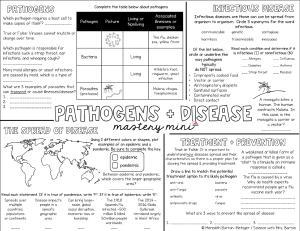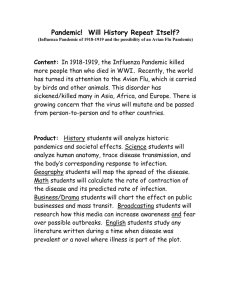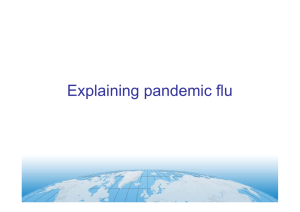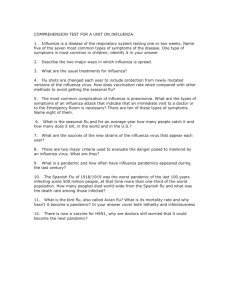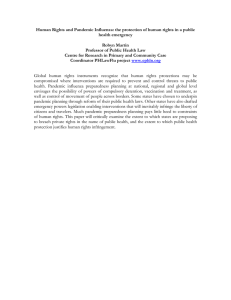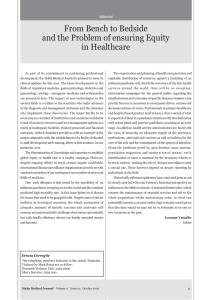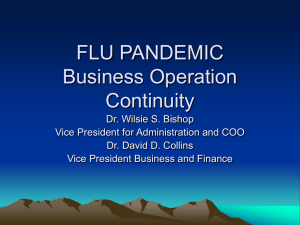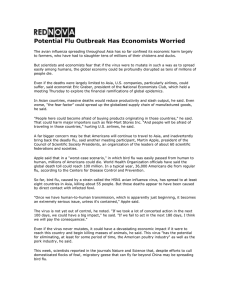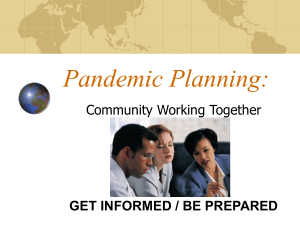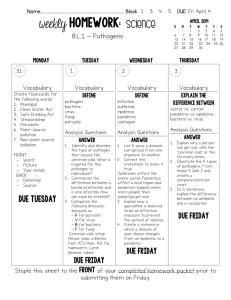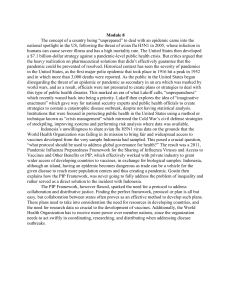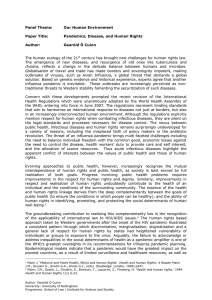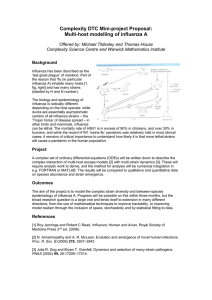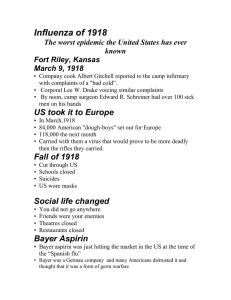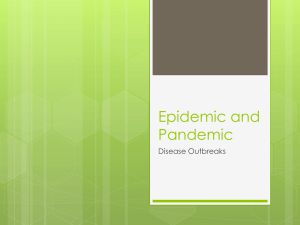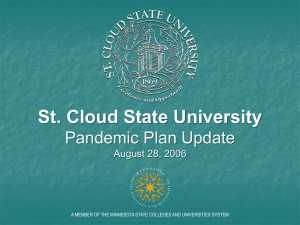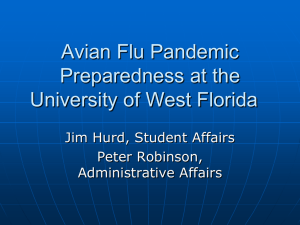Epidemics & Pandemics
advertisement
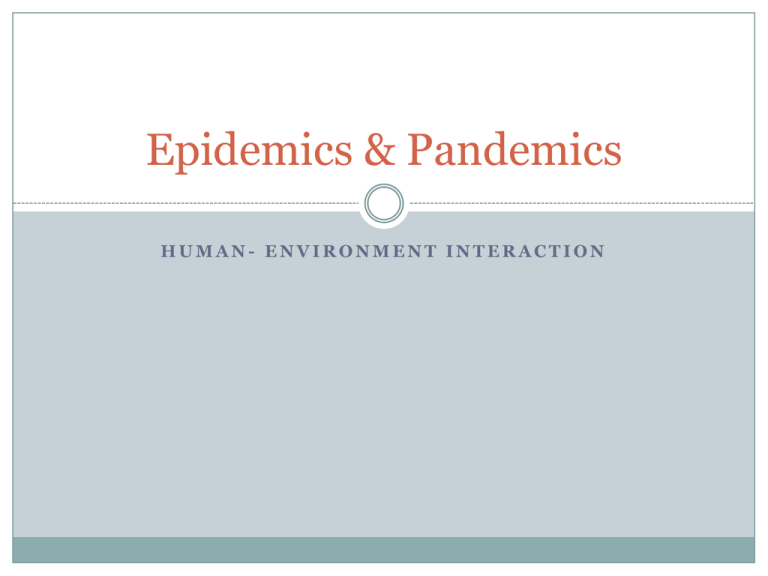
Epidemics & Pandemics HUMAN- ENVIRONMENT INTERACTION What is an epidemic? Epidemic - a widespread occurrence of an infectious disease in a community at a particular time. Example of an epidemic: Influenza Seasonal flu Minimal economic loss and social disruption What is a pandemic? Pandemic – an occurrence of an infectious disease affecting a large area, such as an entire country or the world Examples: Black death Spanish Influenza Usually a new strain of a virus that humans have little to no immunity to Causes social disruption and economic loss Stages of a Pandemic WHO has set stages of a flu pandemic to help determine what the actions should be taken Stage 1-No animal influenza reported Stage 2 – An animal influenza virus circulating in domestic or wild animals is known to have caused infections in humans Stage 3 – Animal to human transmission in localized cases no human to human infections Stage 4 – Human to human transmission; community level outbreaks Stage 5 – Same virus causing outbreaks in two or more countries Stage 6- Same virus in at least one additional country Spanish Flu 1918-1919 Why do you think the Spanish Flu spread so quickly? What physical or human factors influenced the spread? Answer in your notes.
